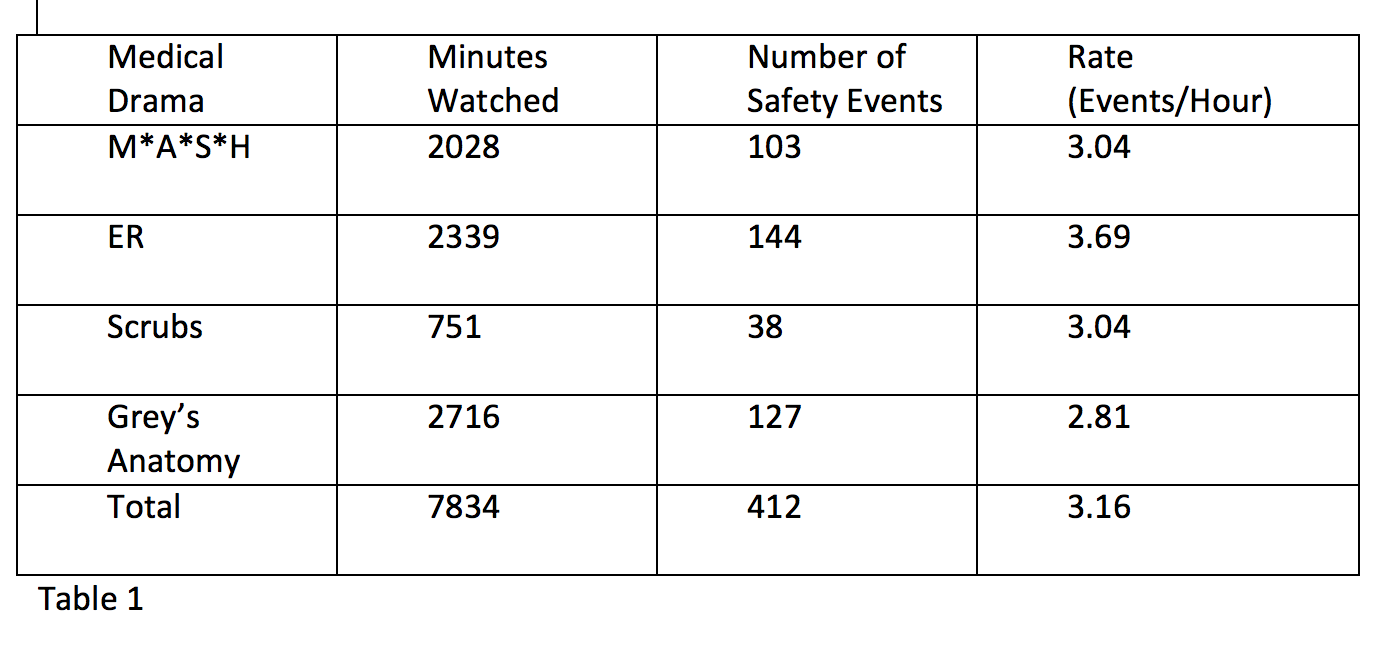Background: Since 1951, medical television dramas have impacted how the public views, understands, and learns about the medical profession. Previous studies have examined how these shows depict topics such as cardiopulmonary resuscitation; other studies have shown that medical television dramas influence viewers’ perceptions of the healthcare profession. Our particular area of interest is that of medical error and its portrayal in medical dramas. We aimed to investigate the frequency and types of medical errors in medical television dramas.
Methods: We selected 4 medical television dramas: M*A*S*H (1972), ER (1994), Scrubs (2001), and Grey’s Anatomy (2005). We created a RedCAP data entry tool similar to our institution’s online patient safety event reporting system. Student coders were trained using a brief presentation on how to identify and report patient safety events and introduced to qualitative coding methods. They coded an episode of The Resident (2018) as a group with the primary investigators to standardize the coding process. They coded 3 episodes of St. Elsewhere (1982) on their own, which were reviewed for content and clarity. The coders watched their assigned series and recorded patient safety issues in the data entry tool.
Results: The coders identified 412 safety events in 204 episodes (7,834 minutes) of medical dramas, with an overall rate of safety events of 3.16 events/hour (Table 1). The types of events identified were primarily behavioral events (N=98, 24%), which included assault, consensual sexual activity, disruptive behavior, suicide or suicide attempt, or threats by patients. Forty-one events (10%) were omissions/errors in assessment, diagnosis, or monitoring. Thirty-three (8%) of the incidents were coded as primarily care coordination or communication issues, and 15 (4%) were medication-related. Blame was placed on individuals in 79 (19%) of the incidents. The safety events were also characterized in terms of level of harm on a scale of 1-9 with specific qualifiers for each number. Most safety events (79%) were either near misses or reached the individual without significant harm (harm level > 5). Twenty-one percent of the events caused harm (harm level < 6), and medical error resulted in 17 deaths (4%).
Conclusions: Medical error is commonly portrayed in medical television dramas. The most common types of patient safety incidents dramatized are behavioral events and diagnostic errors. The types of medical errors portrayed may be different than what is typically seen at a hospital. An important step in this area of research is exploring the portrayal of medical errors and their consequences in medical television dramas to better understand how medical television dramas influence the public perception of medical error.

